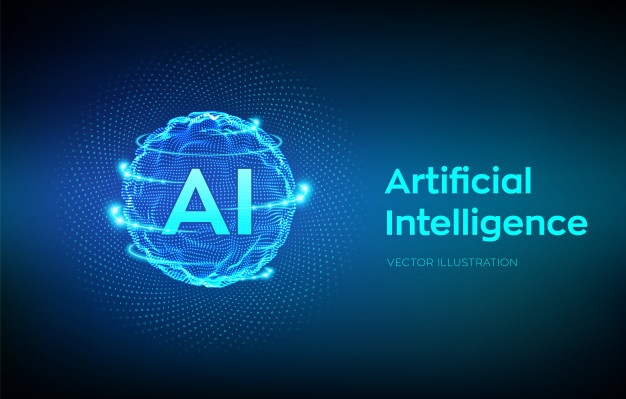Transformation of Talent Acquisition by Algorithms
3AI April 30, 2021

Business leaders have long recognized that the ability to hire the right talent plays a significant role in any organization’s performance. Views about the challenges to acquiring and retaining such talent have evolved over time. We have moved on from a focus on the notion that a talent shortage is creating a “war for talent,” an idea that emerged in the late 1990s and prompted investment in recruiting, marketing and employer brands. According to Gartner’s 2015 CEO and Senior Executive Survey, only 27% of CEOs now believe strongly or moderately that a talent scarcity is reaching crisis proportions
The notion of talent is changing, and the future of work points to the idea of talent platforms, or talent marketplaces, with individuals bidding on which work to perform within their organization. In addition, we see workers recognizing a trend toward being able to work anywhere in the world, toward being part of a global labor market much more than just a local one. These developments point to the necessity of being able to match talent very quickly to work that needs to be done, be that temporary work assignments or specific roles within an organization. Algorithms — advanced statistical models using predictive analytics and machine-learning techniques — are instrumental in making this possible at a global scale. Today’s critical investments in talent acquisition relate to optimizing and matching talent to the work that needs to be accomplished so as to contribute to the best possible business outcomes. Highly innovative and advanced organizations are already investing in this space and reaping the rewards in terms of higher quality of hires and lower cost per hire.
Algorithms will transform recruitment processes by replacing reliance on both recruiters’ intuition and automated CV evaluation based on word matching with insights gleaned over time from analysis of large datasets. This will help hiring managers hire the best staff.
A More Optimized CV Processing
Algorithms evaluating candidates’ suitability for particular roles will replace both manual processing of CVs (resumes) by recruiters and automated CV ranking based on word matching. The first step in building a statistical model to predict who would be the best fit for a given role is to define what the best possible outcome would be — what metric or indicator would confirm that a particular hire was successful. This is much more difficult than in the case of a model to predict the chance of an employee choosing to leave an organization. The outcome metric in the latter case is quite simple and binary — either “yes,” the individual left voluntarily, or “no,” the individual stayed. The definition of a successful hire is not nearly as clear-cut. This leads to considerable variability of approach in terms of the predictive models that are available on the market. Below we describe a selection of the factors measured by current algorithm-based approaches.
Candidate Conversion Rate
Talent acquisition leaders — in other words, recruiters — frequently receive incentives according to how quickly they fill positions to the satisfaction of a hiring manager. They therefore focus on the hiring pipeline and how quickly they can go through the “hiring funnel,” starting with talent sourcing, proceeding to the talent assessment stages (including interviews), and finishing with the final selection of, and acceptance by, a selected candidate. Rather as with a conversion rate of leads to closed deals in marketing analytics, the focus in this approach is on the candidates with the best chance of being converted into hires. Algorithms for this approach frequently take into account the predicted chance of an individual being ready to take the next career step on the basis of factors like social media activity and time spent looking at job postings and applying for jobs, as well as variables such as the time since the last promotion and how long an individual has been in a given job. Examples of software tools that support this approach are available from Entelo, Gild and LinkedIn.
Promotion or career progression rate
The rate at which individuals have been promoted is another measure that some providers use to define hiring success. Here the focus is on candidate characteristics that match the characteristics of individuals who have had similar roles and been promoted successfully. The speed of progression is also examined, on the assumption that top performers progress more quickly in their careers. Solutions from Workday, Ultimate Software and Cluster are examples of this approach.
Performance ratings
Performance or feedback ratings are sometimes used to infer whether an individual was a successful hire. In most cases, this approach refers to annual performance appraisal scores, where available. Some software may also include ratings or feedback provided at the end of a probationary period following the hiring of an individual. Some solutions, such as those of Clustree, will include this dataset when available, even though they do not rely solely on it.
Complex Data Sources Perusal
The ability to use a wide variety of data sources in complex ways by employing machine-learning and data science techniques is resulting in a growing number of unique software solutions for talent acquisition leaders to evaluate. To generate a score indicating the chance that an individual will perform well in a particular role, a number of factors and datasets must be examined. Candidate conversion algorithms are likely to focus on comparing a set of candidates to those who were hired. In algorithms focused on other success metrics, the comparison will be between a set of candidates and those employees who have shown themselves to be successful in the same or similar roles.
CVs and job descriptions
Because the CV remains such a strong fixture in talent acquisition processes, this is one of the first data sources turned to by data scientists. It is particularly used in cases where the success metrics relate to career progression. Job descriptions also provide useful cues about expected skills and competencies, and indications of how to describe the kinds of work that the new hire will need to perform. Solutions from Clustree, EdGE Networks, Job Market Maker, Spire and Workday, among others, use CV and job descriptions to create career, job, skill and competency maps.
Psychometric and behavioral data
Psychometric test data and behavioral data have long been used in talent acquisition processes. This data may come from standard psychological tests, such as those monitored by groups like the International Test Commission . Some solutions also incorporate data about how candidates interact with technologies as a basis for inferring certain behavioral categories or preferences. Most providers see this kind of information as an additional dataset that can prove useful, but none relies solely on it.
Business outcomes
Business outcome datasets are mainly used to define hiring success by providers focused on performance metrics. They vary widely by the type of role and the availability of individual performance data.
Recommendations for Talent Acquisition Leaders
TA Leaders should invest now in innovative algorithmic models to support hiring activities, and test these models’ performance over time in context, preferably with a relevant control group. They should keep investing in assessment solutions, while also piloting new predictive models, in order to compare the hiring success rates of either approach. Also, they should make this comparison a 12-to-24-month project, as proof of the validity of these approaches will be forthcoming only after new hires have had time to prove their worth, which could be months, or even, for some employees, years.






